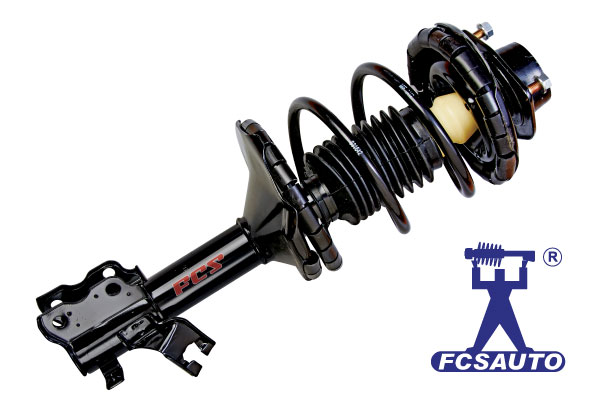Shocks and struts are subject to wearing out gradually over time which will negatively affect overall performance including reduced steering precision, stopping performance and overall vehicle stability. Read below to learn more about the eight most common symptoms attributable to worn shocks & struts.

1. Instability at High Speeds
The vehicle loses its stability on the highway and is constantly moving up and down.

2. Vehicle “Tips” to One Side in Turns
When taking a sharp turn, the vehicle leans or “tips” to the outside of the turn and feels wobbly. This is because as shocks or struts wear, they can lose the ability to properly control the rate of weight transfer when going into turns.

3. Frontend Dives During Hard Braking
The front end of the vehicle dips quickly toward the ground during hard braking and sudden stops. This can become dangerous as it will often increase stopping distances.

4. Rearend “Squats” During Acceleration

5. Excessively Bouncy Ride
After hitting a bump in the road, you can feel the tire bouncing. You may also hear a clunking noise. This sound usually is caused by metal-to-metal contact when the shock or strut bottoms out when hitting a bump or a result of worn shock or strut mounting components.

6. Unusual Tire Wear Patterns
When shock or struts are worn the vehicle can experience reduced road holding force and the tires are not being held firmly to the road. As a result, the tread wears in an uneven pattern, including cupping and scalloping of the tires.

7. Leaking Fluid on the Exterior of Shocks or Struts
If you notice excessive hydraulic fluid leaking from your shocks or struts, it’s a strong indicator they’re wearing out. This usually means the internal seals are worn and the internal fluids essential to maintaining proper performance are escaping.

8. Vibration in the Steering Wheel
It’s common to have a little bit of vibration in the steering wheel when driving over bumpy or uneven roads. However, If you experience similar vibrations on smooth roads, this can be a sign of worn shocks, struts, or steering stabilizer.





